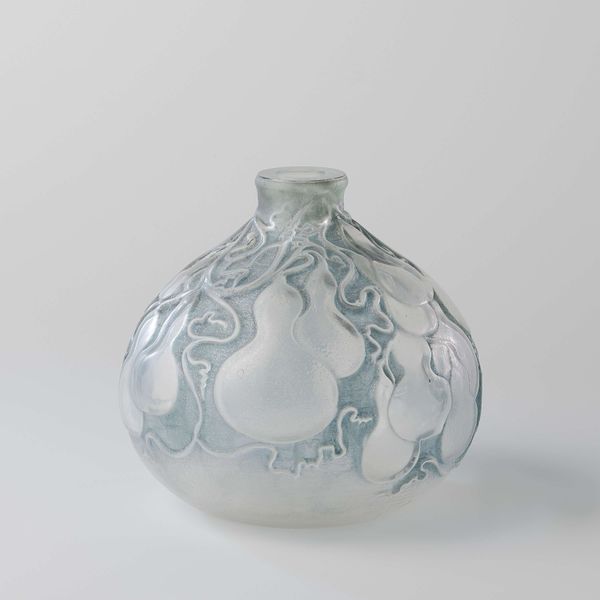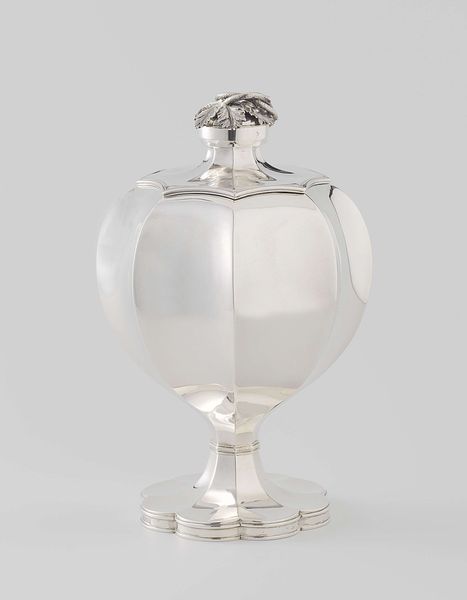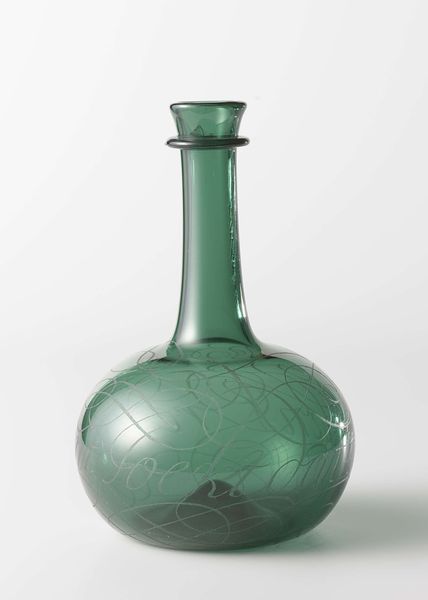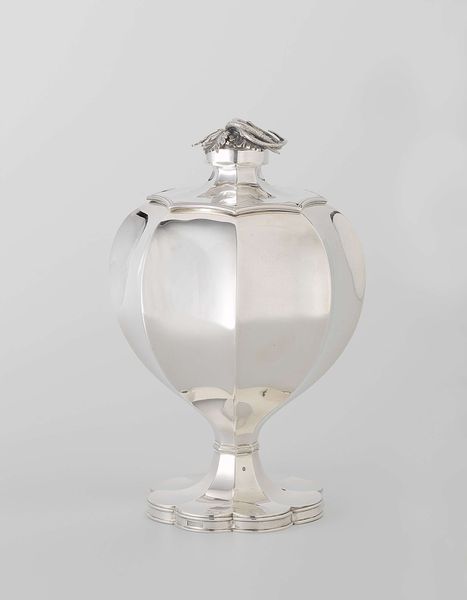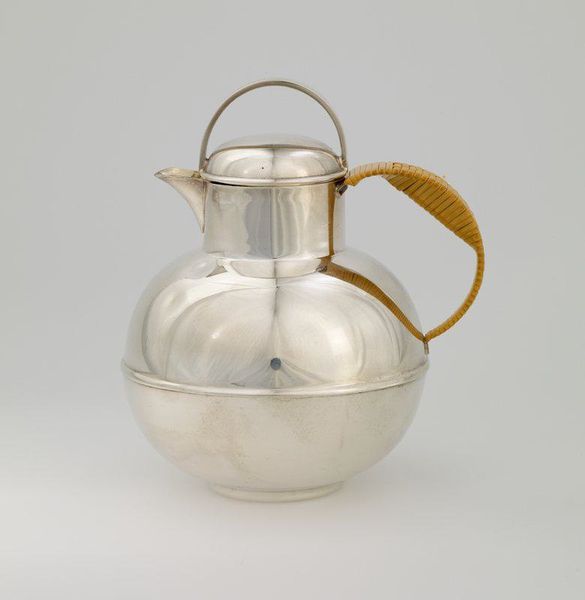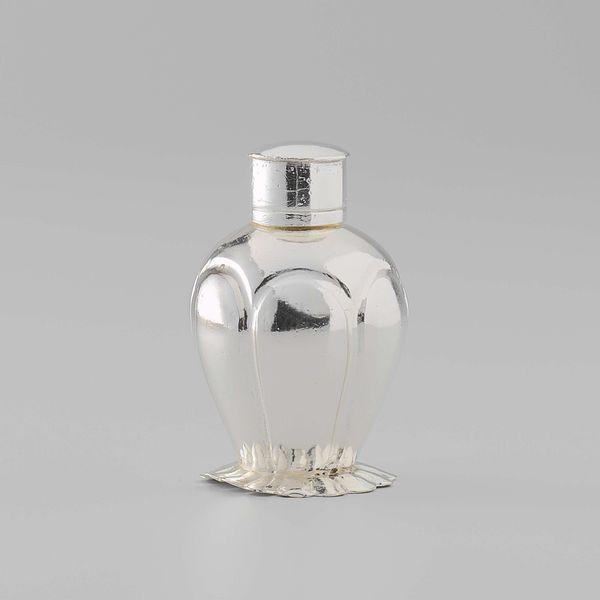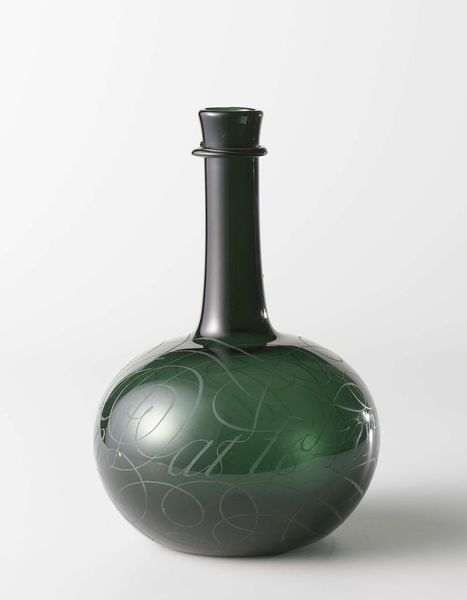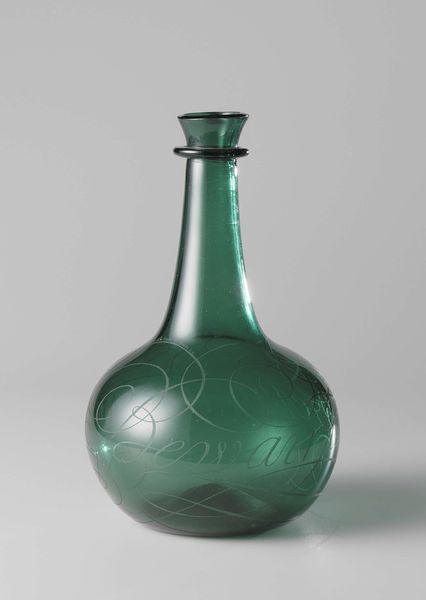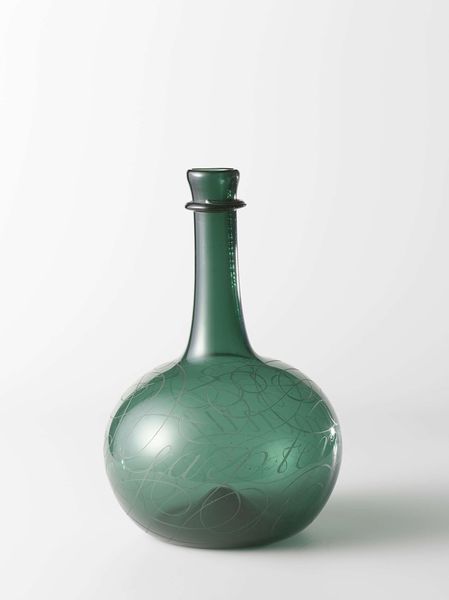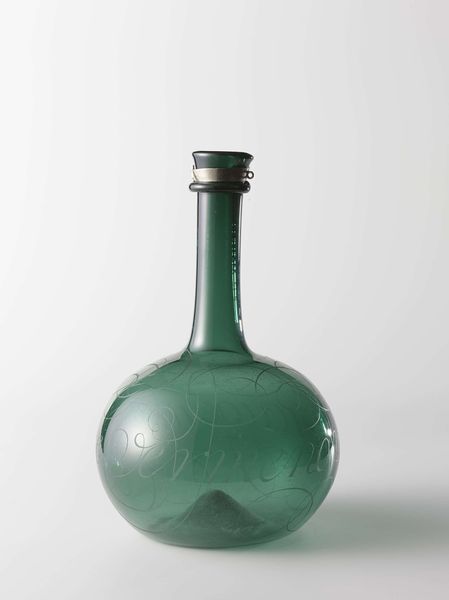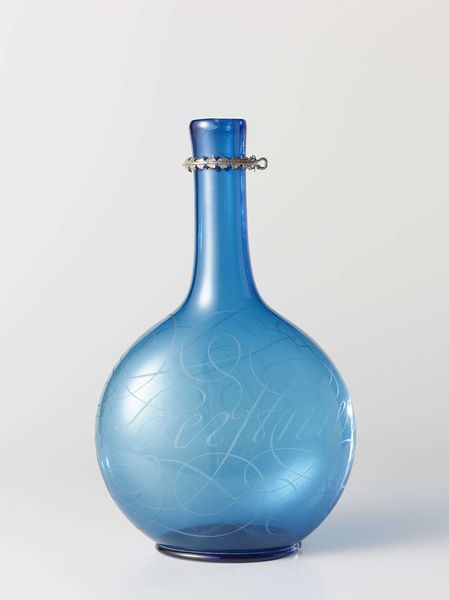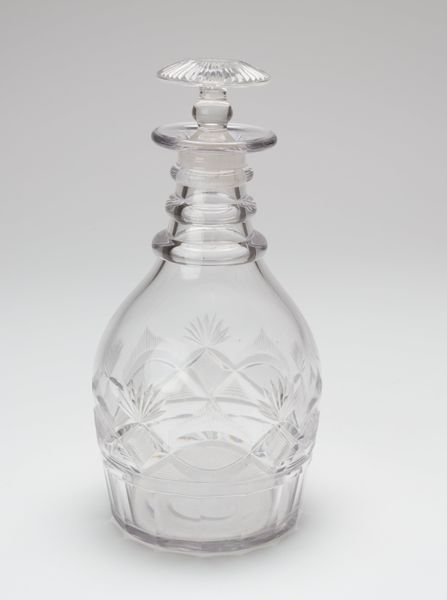
silver, glass
#
silver
#
arts-&-crafts-movement
#
glass
#
product design photgrpaphy
#
decorative-art
Dimensions: 20.3 × 16.8 cm (8 × 6 5/8 in.)
Copyright: Public Domain
Curator: Here we have Charles Robert Ashbee's "Decanter" from 1901, a stunning example of Arts and Crafts design, combining glass and silver. What's your first impression? Editor: It's delicate, almost ethereal. The muted green of the glass and the swirling silver work give it a distinct Art Nouveau sensibility, but with a handcrafted touch. Curator: Precisely. Ashbee, a key figure in the Arts and Crafts movement, sought to revive traditional craftsmanship in the face of industrialization. You can see that here in the hand-wrought silver. Think about the silversmith painstakingly shaping each tendril. Editor: And the socio-political context! Ashbee established the Guild of Handicraft precisely to counter the dehumanizing effects of factory production. This decanter wasn’t just a beautiful object; it was a statement about labor and value. How do you see its purpose at the time? A symbol? A rebellion? Curator: Both, I suspect. It served a functional purpose, of course – holding liquid – but also as a potent symbol of the Guild’s values. The materials are essential to consider: the combination of silver and glass was not unusual, but the emphasis on handcrafting was a deliberate challenge to mass-produced wares. We often view such works as "decorative arts" today, however it goes deeper to production and making, no? Editor: It’s also interesting how an object like this circulated. Was it destined for a wealthy patron’s table, reinforcing class distinctions even as it critiqued industrial society? Or was it part of a broader effort to promote a different kind of aesthetic experience and labor practices among the middle classes? Museums were pivotal in shaping its perception too. Curator: Good point! Its display now in the Art Institute speaks to how we've come to value craft objects. Back then it may have challenged boundaries in social terms. It’s a testament to its enduring appeal, beyond mere function, don't you agree? Editor: Absolutely. It continues to spark debate, raise questions, and invite us to consider the complex relationship between art, labor, and society. Its aesthetic qualities certainly stand the test of time. Curator: Indeed. Seeing it in the gallery like this makes one think about not just its artistic merit, but what it represents about art’s role in a rapidly changing society back then, versus its preserved history today.
Comments
No comments
Be the first to comment and join the conversation on the ultimate creative platform.
